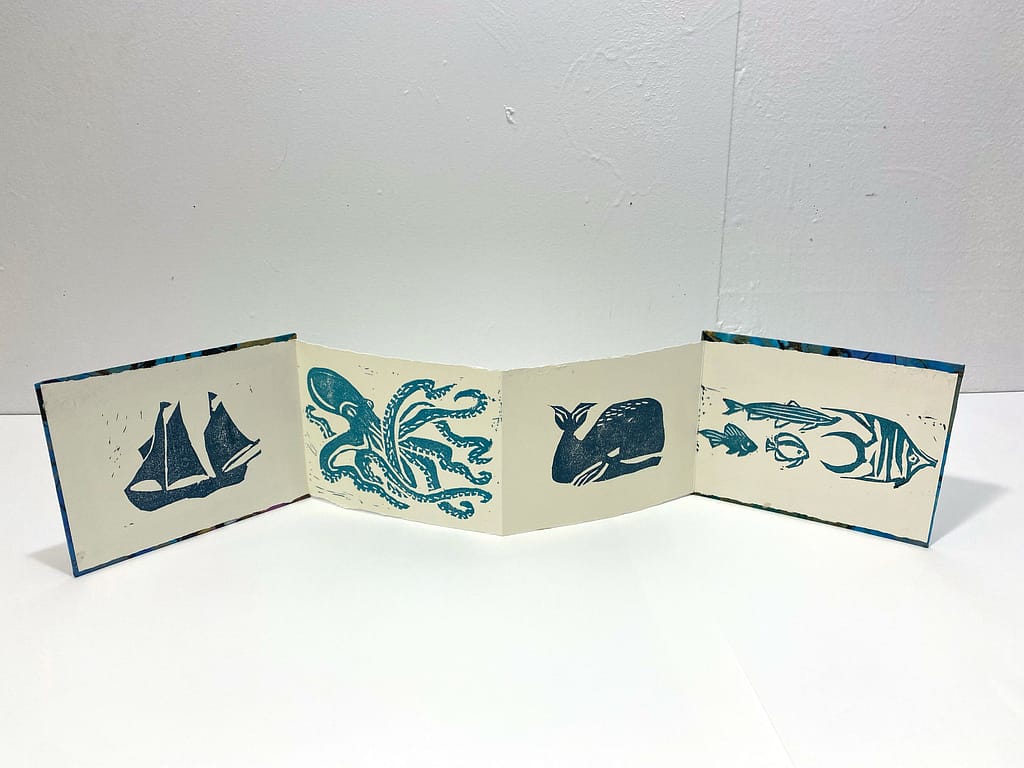Artist Q&A with Hayley Ferber
Hayley Ferber is an artist, educator, curator, and contemporary arts leader living in Brooklyn, New York. In her personal artistic practice, Ferber creates artist’s books with suminagashi paper marbling, watercolor painting, embroidery and printmaking exploring nautical themes. With a BS from New York University in Studio Art, an MAT from the Rhode Island School of Design in Art & Design Education and over 10 years of teaching experience, Ferber’s professional mission is to facilitate and support creative opportunities in the arts. As Deputy Director of Chashama, a non-profit that repurposes unused real estate into artist studios and exhibition spaces, she supports a creative community of multidisciplinary artists.

Who is your favorite artist of all time?
My favorite artist of all time is Kiki Smith. I’m amazed by all the different mediums she works with from printmaking to photography to textiles to sculpture and appreciate the universality of her content exploring the human condition.
How did you become a professional artist?
I studied painting and drawing at NYU as an undergrad and found my way to book and print making about 10 years later. I teach and curate and feel that all of these practices are closely linked. I also work as Deputy Director of Chashama, a non-profit where I support a multidisciplinary group of artists with free presentation space and subsidized studio rentals.
What are the influences and inspirations in your work?
I am greatly inspired by the sea. There is something about the mystery and adventure that lies beneath the waves, this whole other universe full of beauty. As Henry B. Culliver describes in The Book of Old Ships, “… the ship, combines all the elements of aesthetic fundamentals; … Click here to read more









